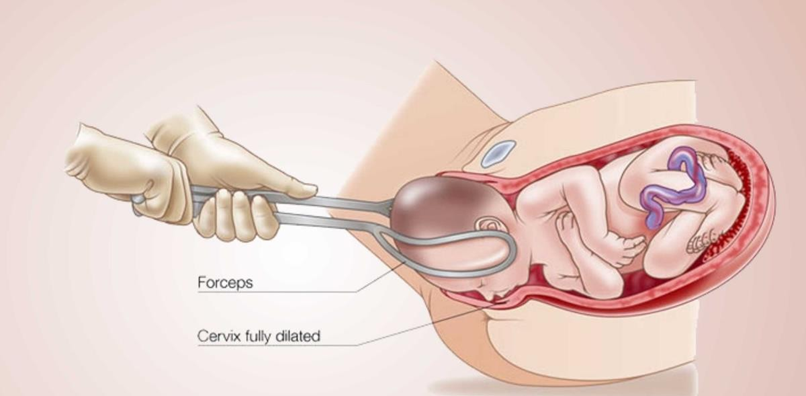A nurse is assessing a newborn following a forceps-assisted birth. Which of the following clinical manifestations should the nurse identify as a complication of this birth method?
Polycythemia
Facial palsy
Bronchopulmonary dysplasia
Hypoglycemia
The Correct Answer is B
Rationale:
A. Polycythemia: Polycythemia, an elevated red blood cell count, is not typically associated with forceps-assisted birth.
B. Facial palsy:
Correct answer. Facial palsy, or weakness or paralysis of facial muscles, can occur as a complication of forceps-assisted birth due to pressure or trauma to the facial nerve during delivery.

C. Bronchopulmonary dysplasia: Bronchopulmonary dysplasia is a lung condition primarily affecting premature infants and is not directly related to the method of delivery.
D. Hypoglycemia: Hypoglycemia, low blood sugar levels, can occur in newborns for various reasons but is not specifically associated with forceps-assisted birth unless there are other complicating factors.
Nursing Test Bank
Naxlex Comprehensive Predictor Exams
Related Questions
Correct Answer is A
Explanation
A.
Rationale:
A. Lentils are a legume known for their high fiber content, making them an excellent choice for increasing dietary fiber.
B. While cabbage is a vegetable, it does not contain as much fiber per cup as lentils.
C. Asparagus is a vegetable that contains fiber, but it typically has lower fiber content per cup compared to lentils.
D. Oatmeal is a grain that contains fiber, but lentils generally have a higher fiber content per cup than oatmeal.
Correct Answer is B
Explanation
Rationale:
A. Back pain following intercourse at 36 weeks of gestation may be common and is not typically indicative of an urgent issue.
B. Severe vomiting in early pregnancy could indicate hyperemesis gravidarum, which may require immediate assessment and intervention to prevent dehydration and electrolyte imbalances.
C. Frequent urination at 10 weeks of gestation is common due to hormonal changes and increased pressure on the bladder from the growing uterus, but it does not typically require immediate assessment unless accompanied by other concerning symptoms.
D. Periodic tingling of the fingers at 24 weeks of gestation could be due to carpal tunnel syndrome, which is common in pregnancy but does not usually require urgent assessment unless severe or accompanied by other symptoms.
Whether you are a student looking to ace your exams or a practicing nurse seeking to enhance your expertise , our nursing education contents will empower you with the confidence and competence to make a difference in the lives of patients and become a respected leader in the healthcare field.
Visit Naxlex, invest in your future and unlock endless possibilities with our unparalleled nursing education contents today
Report Wrong Answer on the Current Question
Do you disagree with the answer? If yes, what is your expected answer? Explain.
Kindly be descriptive with the issue you are facing.
